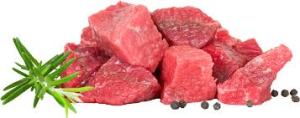Click on the images to find out how these products are made.
Approximately ten billion land animals are raised and killed annually in the United States, for food. Farmed animals–those raised for the meat, dairy, and egg industries are among the most battered. They are subjected to the kind of brutal treatment that would be illegal if forced on dogs or cats. Many farm animals are intensively confined in crates, cages, or pens so small they can barely move, while others are overcrowded in filthy, barren sheds. Painful physical mutilations such as tail docking are commonly inflicted on farm animals without any anesthesia. Most of them are raised for unnaturally high rates of production, which considerably decreases their well-being.
Federal
The U.S. has no federal laws protecting farm animals during their life on the farms where they are raised. Two federal laws cover farm animals during transport and slaughter, but poultry is excluded. There are no federal regulations regarding the breeding, rearing, sale, transportation, or slaughter of chickens.
Transport
The 28-Hour Law enacted in 1873 and amended in 1994, covers farmed animals during transportation only and excludes poultry. The law requires that animals transported across state lines for slaughter, by means other than water or air, be unloaded every 28 hours for rest, food and water. Animals are often tightly confined and transported in extreme heat and cold, and the only requirement is that they receive a break every 28 hours. Many truck drivers do not adhere to this rule, especially when the trip is only slightly over 28 hours. The law is rarely, if ever, enforced.
The Humane Methods of Livestock Slaughter Act (HMSLA) was originally passed in 1958. The Act requires that livestock animals, such as cattle, calves, horses, mules, sheep, swine, and goats, be rendered insensible to pain before being shackled, hoisted, thrown, cast, or cut. This is usually accomplished through electrocution when dealing with pigs and captive bolt stunning for cows, goats, and sheep. Other permitted methods are shooting the animals in the head or gassing them with carbon dioxide gas. The Act excludes poultry, who make up more than 90 percent of the animals slaughtered for food, as well as rabbits, fish, and other animals habitually raised for human consumption.
Also excluded are animals HMSA killed in ritual slaughter to avoid unconstitutionally hindering the practice of religion under the First Amendment.
In addition, HMSA regulations forbid driving animals using anything that could injure them or cause unnecessary pain. Livestock pens, driveways and ramps must also be constructed in such a way so as to prevent injury or pain to the animals. There special provisions for the handling of non-ambulatory livestock (animals that cannot walk). For example, such animals must be separated from the others and provided with a covered pen while they await disposition. Conscious nonambulatory animals may not be dragged, but rather must be moved in a humane manner.
HMSA has been ineffective at ensuring humane handling and slaughter due to lack of enforcement and the fact that slaughterhouses are not open to the general public.
State Laws
Individual states have their own animal cruelty statutes. The majority of U.S. states expressly exempt farm animals, or certain farming practices from their anti-cruelty provisions, making it nearly impossible to provide even meager legal protections. 
The following states ban the use of gestation crates: Arizona, California, Colorado, Florida, Maine, Michigan, Oregon, and Rhode Island.
The following states ban the use of veal crates: Arizona, California, Colorado, Maine, Michigan, and Rhode Island.
The following states ban cattle tail docking: California, Ohio, New Jersey, and Rhode Island.
The following states ban the use of battery cages: California, Michigan.
One state bans the sale of eggs from battery cage facilities: California.
The U.S. consists of 50 states. How many more innocent animals need to suffer before new protective laws are passed?
How many more innocent animals need to suffer before the current laws become strictly enforced?
Our best weapon is our wallet. Let’s STOP eating them.






